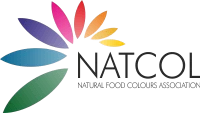NATCOL
WHY ADD COLOR TO FOOD?
EXPECTATIONS OF FLAVOR AND QUALITY
Color is the first characteristic that is noticed in food and can predetermine our expectations of both flavor and quality.
Color and flavor are highly linked, and it is said that we first “eat with our eyes”. Color makes products look interesting and attractive and can also help influence / support flavor perception or expectations . Think of a bag of candy, where there are multiple colors. If you want the strawberry flavored gum, you will automatically take the red piece.
In food manufacturing, colors are added to food and beverages for several reasons:
- To restore the original appearance of food whose color has been affected by processing, storage etc. An example is fruit in fruit preparations that has lost some of its original color during processing with heat.
- To ensure uniformity of color in food from batch to batch – e.g. if raw materials of a food product are subject to seasonal variations, and it is a quality parameter that the final food product is have consistent appearance.
- To give color to foods which would otherwise be colorless. This could be beverages, popsicles, and confectionery products. color is added both to make the products visually more attractive but also to guide the flavor direction. E.g. an orange soft drink is likely expected to have an orange or tangerine flavor rather than a lemon or lime flavor.
- To reinforce colors already present in food but less intense than the consumer would expect – this can also help emphasize the flavor of the product and make products more visually attractive.
Beverages
Beverages
Colors are key ingredients in flavored drinks. Their shade and intensity provide information to consumers about the taste and freshness. One of the main challenges is color stability during processing and throughout product shelf life. Many factors can affect the color of the beverage and must be considered when selecting suitable colors. As beverages vary greatly in terms of their matrix, ingredients and pH, as well as exposure to heat, light and oxygen, the color supplier can advise the most suitable option for selection.
Currently, the Natural Colors and coloring foods used most frequently in beverages are caramel colors, carotenoids, fruit and vegetable extracts or concentrates (grape skin, black carrot, purple sweet potato), safflower or lycopene. Other solutions can also be used to provide a larger color palette or to adhere to specific labelling requirements.
Confectionery
Most confections use colorless ingredients such as sugar or pectin. Therefore the addition of color is often necessary to give an indication of the taste of the sweets and to make them appealing. Depending on the confectionery category, different color performances are required such as intense colors, stability to low pH or heat, water or oil-solubility. For all of these, the stability of the color during the long ambient shelf life is a key criterion and is achievable with the current Natural Color solutions on the market.
These products require a large diversity of color shades as the market demands several varieties of flavored and colored candies, often presented under a products assortment.
Confectionery
Ice Cream
Ice Cream
A rainbow of colors can be obtained in ice cream, sorbets and popsicles. There are several points of attention when using Natural Colors and Coloring Foods during the manufacturing process of edible ice cream: pH of the base, heating and pasteurization, homogenization and aeration.
Two of the most popular flavors of ice cream are vanilla and strawberry. Vanilla ice cream is often colored with annatto, carotenoids or orange carrot, while strawberry ice cream often contains red beet or carmine.
Dairy products
In fermented dairy such as yoghurt and cheese, colors derived from nature are widely used. The most popular flavour in fermented dairy around the world is strawberry. Strawberry yoghurts can be colored with carmine, black carrot or other sources of anthocyanins.
Cheeses such as red Cheddar or some continental cheeses have been colored with annatto for decades and some speciality cheeses can also have colored rind with annatto.
Dairy products
Cereals & snacks
Cereals & snacks
Historically, cereal has enjoyed a beneficial health halo. With the demand for more natural foods, the food industry is innovating to align with the consumer view of wellness in the cereal aisle.
A wide range of naturally sourced pigments can be used—generally, yellow, orange, red and brown colors are most desired. In snack seasonings, fortification with antioxidants will permit to extend shelf life and keep the vibrant orange of paprika or annatto colors.
Savoury/Plant Based Meat Alternatives
Savoury applications are a daily part of our diets and often rely on naturally-derived colors to provide their appetizing appearances. Given the diversity of savoury foods, many different product formulations exist to achieve optimal performance across all product lines within the group.
Currently, most demanding applications are meat alternatives . They require colors from plant-based sources that mimic the real meat products with all the guarantees of a vegan foods.
